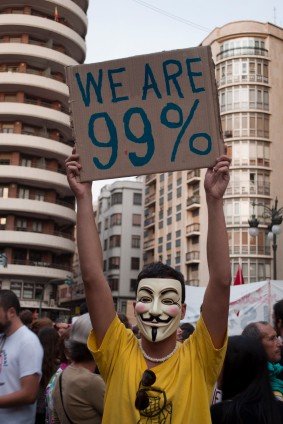One of the central themes behind the Occupy Wall Street protests was the widening income disparity between the classes and the 99% versus the 1% mantra. Despite this class warfare, a recent study indicates that our conventional method for tracking income inequality could be all wrong. This new research focuses on consumption levels instead of the peoples annual income. Business Insider reveals the data:
In “A New Measure Of Consumption Inequality,” Kevin A. Hassett and Aparna Mathur assert that “contrary to popular belief,” things have remained fairly stable over the past three decades, edging slightly higher in the 1980s, then dipping in the Great Recession (2007-2009).
Here’s how the authors arrived at that conclusion: “Income inequality measured using a household’s annual wage and salary income may not provide a true picture of economic inequality, since households experiencing temporary negative income shocks would bias the inequality measures upwards.”
Going further, income inequality is hard to gauge when we aren’t accounting for “transfer payments,” or government aid, at the bottom of the income scale. For example, one popular 2006 paper on income distribution used tax return data from the IRS, which didn’t account for Social Security, Medicare, food stamps and other low-income programs.
Consumption data, meanwhile, trumps all.









